Aztec Government System
The Aztec government was a system based on military power, tribute collection, and religious authority. Formed by the Triple Alliance in 1428, it evolved from a pact between three city-states into an empire dominated by Tenochtitlan. This article examines the Aztec governmental structure, from its dual leadership and provincial administration to its social hierarchy and methods of control.
The Triple Alliance: Foundation of an Empire
The Aztec government began in 1428 with the Triple Alliance, a military and political pact between the city-states of Tenochtitlan, Texcoco, and Tlacopan. 1 This coalition formed after a civil war that overthrew the Tepanec empire of Azcapotzalco, which had previously controlled the region. 3 Initially a partnership of three autonomous city-states, or altepetl , each was ruled by its own king, or tlatoani . 1
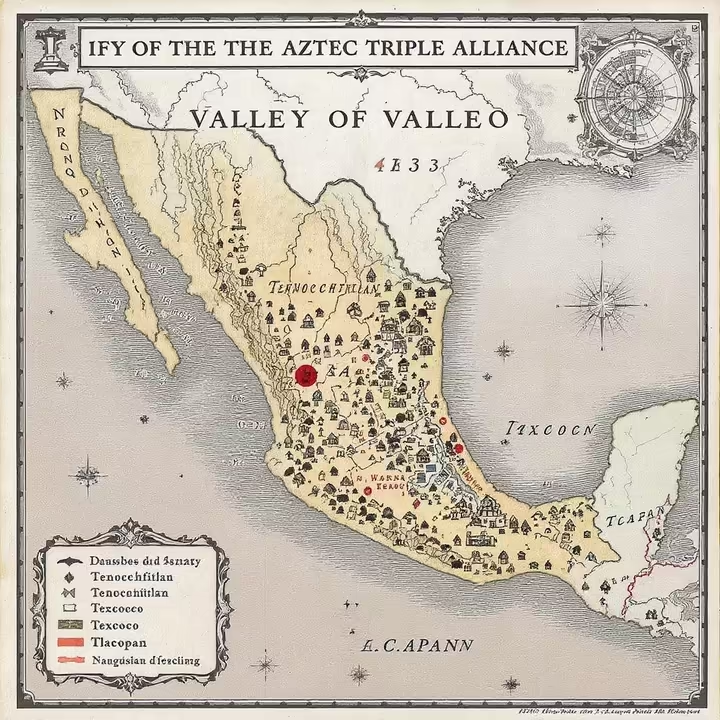
Conquered spoils were divided, with two-fifths each for Tenochtitlan and Texcoco and one-fifth for Tlacopan. 1 However, Tenochtitlan’s superior military strength allowed it to accumulate more tribute and resources, establishing its dominance over the alliance. 1 While Texcoco was a center for law and culture, Tenochtitlan assumed military command and influenced its partners' internal politics, creating an empire that would later face internal resentment. 1, 2
Dual Leadership: The Huey Tlatoani and Cihuacoatl
The government operated with a division of power between two supreme offices. This dyarchy separated imperial and military duties from the daily internal administration of the state.
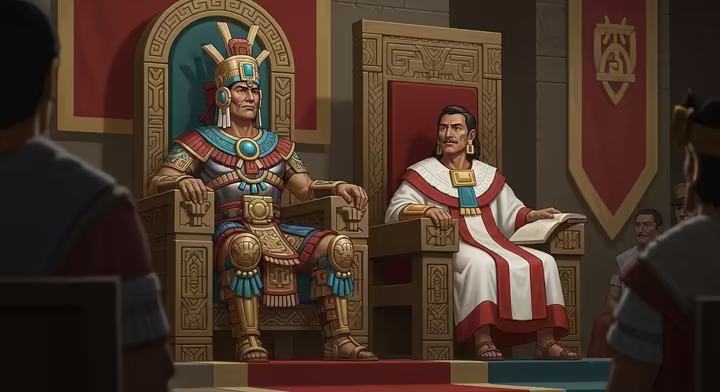
The Huey Tlatoani: Supreme Commander
The supreme ruler was the Huey Tlatoani , or "Great Speaker," who held final authority over military, foreign, and religious matters. 9 As commander-in-chief, he led military campaigns and decided the fate of conquered peoples. 12 He also acted as the high priest of the state religion, overseeing public ceremonies and sacrifices to appease the gods, especially the patron deity Huitzilopochtli. 12
The Cihuacoatl: Head of Internal Affairs
The Cihuacoatl , a title meaning "Snake Woman" though held by a man, served as a prime minister. 11, 16 He managed the state’s internal administration, finances, and the capital city of Tenochtitlan. 9 The Cihuacoatl also presided as the supreme judge of the empire's highest court. 9
Succession and Military Merit
Succession to the Huey Tlatoani was an elective monarchy, not based on primogeniture. After a ruler's death, a High Council of Four, comprising top nobles and military commanders, selected the most capable successor from the royal lineage. 10 The primary criterion was proven military skill and leadership experience, ensuring the new ruler could command the army effectively. 21 The chosen leader, often a brother or nephew of the deceased, would then launch a "coronation war" to suppress rebellions and solidify his authority. 13
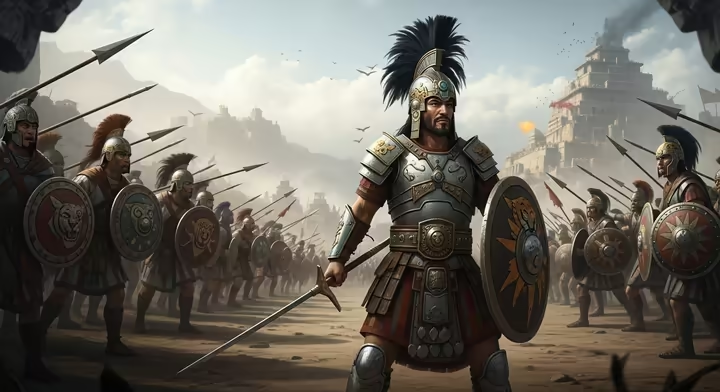
Imperial Administration and Provincial Rule
The Aztecs governed conquered territories using a system of indirect rule. They allowed the local rulers ( tlatoani ) of conquered city-states ( altepetl ) to remain in power, which preserved local identities and administrative structures. 2, 23 This approach differed from the centralized bureaucracy of the Inca Empire. 25
Local autonomy was conditional. A subject ruler had to pledge loyalty to the Huey Tlatoani , pay semi-annual tribute, supply warriors for imperial campaigns, and recognize the Aztec god Huitzilopochtli. 2 Imperial tribute collectors ( calpixque ) were stationed in each province to ensure compliance. 7, 20 In rebellious regions, the Aztecs installed a military governor ( cuauhtlatoani ) and a garrison to enforce control. 5
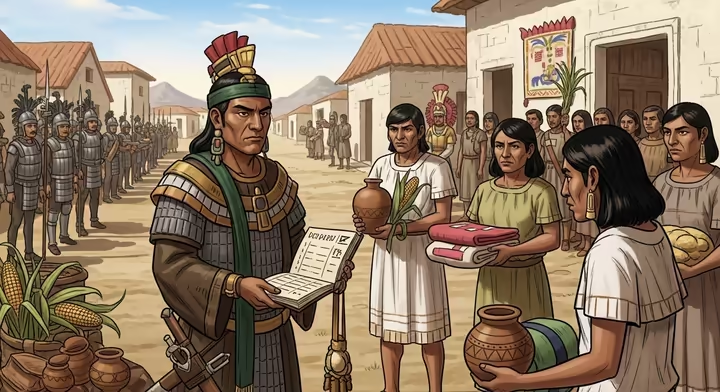
Social and Civic Organization
The Calpulli: The Community Unit
Each calpulli managed its communal lands, organized labor, and was collectively responsible for paying tribute. 27 The calpulli also ran its own school ( telpochcalli ) for commoner boys, which focused on military training to supply warriors for the state's armies. 28
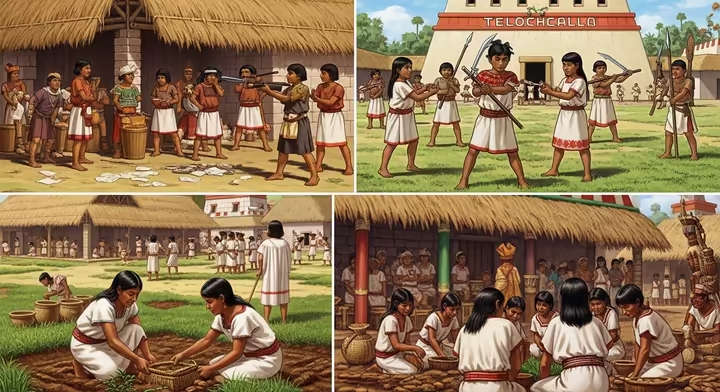
A Stratified Social Hierarchy
Aztec society had a strict class structure. The pipiltin , or hereditary nobility, held the highest government, military, and religious positions and were exempt from tribute. 11 The majority were macehualtin , or commoners, who worked the land and paid tribute to the nobility and the state. 11
Social mobility was possible through military success, as a commoner who captured enemies in battle could be elevated to noble status. 30 Other social groups included the pochteca , a guild of long-distance merchants who also acted as spies, and the tlacotin , or slaves, who had more legal rights than their Old World counterparts. 11
Pillars of Control: Law, Tribute, and Ideology
The Aztec legal system was designed to maintain the social order. The courts were hierarchical, ranging from local judges to the supreme court in Tenochtitlan, often led by the Cihuacoatl . 19 Nobles who broke the law often received harsher punishments than commoners, as they were held to a higher standard. 34
Tribute was the empire's economic foundation, as detailed in records like the Codex Mendoza . 35 This codex records the large quantities of goods, from food staples to luxury items like feathered costumes and gold, that flowed into Tenochtitlan from 38 tributary provinces. 36 This wealth funded the state, supported the nobility, and equipped the armies.
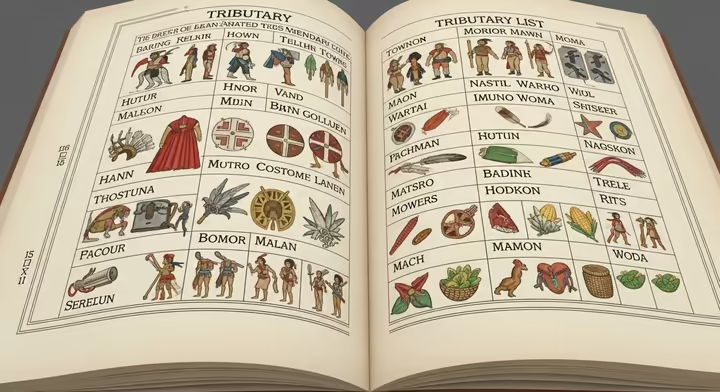
State ideology, promoted by the priesthood, justified warfare as a sacred duty to capture sacrificial victims for the gods. 13 This religious belief was thought to maintain cosmic balance and was enforced by elite military orders like the Eagle and Jaguar warriors. 7 Law, tribute, and religious ideology worked together to reinforce imperial power.
A Comparative Analysis of the Aztec State
The Aztec government evolved over time, centralizing power under rulers like Moctezuma II, who expanded the empire and reinforced the division between nobles and commoners. 39 The system was a hybrid, combining a strong central government with indirect rule over semi-autonomous client states. 41 This structure created a vast tribute empire, unlike the politically separate Maya city-states. 43
Compared to the highly centralized Inca state, the Aztec empire was less interventionist, allowing for greater local autonomy and market-based economies. 25 The government's unique structure, a product of its history, enabled its rapid expansion. However, this same structure created weaknesses that contributed to its eventual collapse.
Works cited
- The Aztec Triple Alliance - ThoughtCo, https://www.thoughtco.com/aztec-triple-alliance-170036
- Aztec Empire - Wikipedia, https://en.wikipedia.org/wiki/Aztec_Empire
- library.fiveable.me, https://library.fiveable.me/key-terms/world-history-to-1500/triple-alliance#:~:text=The%20Triple%20Alliance%20was%20officially,city%2Dstates%20into%20their%20empire.
- Aztec Triple Alliance - HISTORY CRUNCH, https://www.historycrunch.com/aztec-triple-alliance.html
- Aztec Civilization: History, Empire and Culture | TimeMaps, https://timemaps.com/civilizations/aztec-civilization/
- What was the powerful Aztec Triple Alliance? - History Skills, https://www.historyskills.com/classroom/year-8/aztec-triple-alliance/
- Political and military organization of the Triple Alliance | History of Aztec Mexico and New Spain Class Notes | Fiveable, https://library.fiveable.me/deep-histories-of-conquest-aztec-mexico-and-new-spain/unit-2/political-military-organization-triple-alliance/study-guide/7t33hTSUjrM3cVfE
- Acolhua Alliance: Partners of the Aztec Empire - Indigenous Mexico, https://www.indigenousmexico.org/articles/acolhua-alliance-partners-of-the-aztec-empire
- Aztec Government - HISTORY CRUNCH, https://www.historycrunch.com/aztec-government.html
- Aztec Emperors (Huey Tlatoani) - HISTORY CRUNCH, https://www.historycrunch.com/aztec-emperors-huey-tlatoani.html
- Aztec - 6th Grade Social Studies, https://nsms6thgradesocialstudies.weebly.com/aztec.html
- The Role of Aztec Kings - Heather on History, https://heathervoight.com/2017/12/10/the-role-of-aztec-kings/
- Aztec warfare - Wikipedia, https://en.wikipedia.org/wiki/Aztec_warfare
- Aztec Leaders: Rulers, Supreme Ruler and the Voice of the People ..., https://www.ancient-origins.net/history-famous-people/tlatoani-0010318
- How did religion play a role in the Aztec system of governance? - TutorChase, https://www.tutorchase.com/answers/ib/history/how-did-religion-play-a-role-in-the-aztec-system-of-governance
- Governance of the Aztec Empire - History on the Net, https://www.historyonthenet.com/governance-of-the-aztec-empire
- The Aztec Empire: Society, Politics, Religion, and Agriculture - History on the Net, https://www.historyonthenet.com/aztec-empire-society-politics-religion-agriculture
- Yes Prime Minister! - Mexicolore, https://www.mexicolore.co.uk/aztecs/aztefacts/yes-prime-minister
- The Aztec legal system - Mexicolore, https://www.mexicolore.co.uk/aztecs/you-contribute/aztec-law
- Bálint Kulifay: The Government of the Aztec Empire – KRE-DIt, http://www.kre-dit.hu/uncategorized/balint-kulifay-the-government-of-the-aztec-empire/
- How could one become an Aztec Emperor? : r/AskHistorians - Reddit, https://www.reddit.com/r/AskHistorians/comments/523e2l/how_could_one_become_an_aztec_emperor/
- Aztecs - Wikipedia, https://en.wikipedia.org/wiki/Aztecs
- GOVERNING SMALLER COMMUNITIES IN AZTEC MEXICO | Ancient Mesoamerica | Cambridge Core, https://www.cambridge.org/core/journals/ancient-mesoamerica/article/governing-smaller-communities-in-aztec-mexico/1504D27B9E1DB14ACAE9FA3FE526416C
- Aztecs - Summary - eHRAF World Cultures, https://ehrafworldcultures.yale.edu/cultures/NU07/summary
- ABOUT THE COMPARISON OF THE STATE AUTHORITY AND SOCIAL ORGANIZATION BY INCAS AND AZTECS - CiteSeerX, https://citeseerx.ist.psu.edu/document?repid=rep1&type=pdf&doi=fa2f096a5c313312cd08f036a36abc0ef21f2dbd
- The Aztec and Inca Empires - Harrison Humanities, https://harrisonhumanities.weebly.com/uploads/5/8/0/4/58047613/aztec___inca_comparison_notes.pdf
- The Aztec Empire for Unit 1 of AP World History - Productive Teacher, https://www.theproductiveteacher.com/the-aztec-empire-for-unit-1-of-ap-world-history
- Calpulli - Wikipedia, https://en.wikipedia.org/wiki/Calpulli
- Calpulli: Core Organization of Aztec Society - ThoughtCo, https://www.thoughtco.com/calpulli-core-organization-of-aztec-society-170305
- Social structure and daily life in Aztec society | History of Aztec Mexico and New Spain Class Notes | Fiveable, https://library.fiveable.me/deep-histories-of-conquest-aztec-mexico-and-new-spain/unit-3/social-structure-daily-life-aztec-society/study-guide/IjEi0FDOc3Jr06KM
- Aztec Society - World History Encyclopedia, https://www.worldhistory.org/article/845/aztec-society/
- Top 10 Things to Know About the Aztecs and Their Empire - ThoughtCo, https://www.thoughtco.com/things-to-know-about-the-aztecs-170043
- Crime and Punishment in the Aztec Empire | History Hit, https://www.historyhit.com/crime-and-punishment-in-the-aztec-empire/
- STUDY GUIDE, https://assets.ctfassets.net/qnesrjodfi80/7gSUU1Tk1q0EAUCCKCi6IE/26eec7808cb6c7119581ab334f49d100/prager-the_ten_commandments_00_introduction-studyguide.pdf
- Codex Mendoza (1542) - The Public Domain Review, https://publicdomainreview.org/collection/codex-mendoza-1542/
- The Essential Codex Mendoza, https://www.csus.edu/indiv/o/obriene/art111/readings/The%20Essential%20Codex%20Mendoza.pdf
- "Codex Mendoza, Folio 46 recto (p. 99)" by Christopher Pool and ..., https://uknowledge.uky.edu/world_mexico_codices/11/
- The Aztec Warrior: Rank and Warrior Societies - History on the Net, https://www.historyonthenet.com/aztec-warriors-rank-and-warrior-societies
- Montezuma: Last Ruler of the Aztecs - World History Encyclopedia, https://www.worldhistory.org/Montezuma/
- Moctezuma II - Wikipedia, https://en.wikipedia.org/wiki/Moctezuma_II
- Aztec sovereignty and Motecuhzoma Xocoyotzin's sacred and secular roles - Taylor & Francis Online, https://www.tandfonline.com/doi/pdf/10.1080/21500894.2025.2459848
- The Aztec Empire (Chapter 3) - Fiscal Regimes and the Political Economy of Premodern States, https://www.cambridge.org/core/books/fiscal-regimes-and-the-political-economy-of-premodern-states/aztec-empire/679E012E20A091113A235307615AFE37
- Government of the Maya - History on the Net, https://www.historyonthenet.com/government-of-the-maya
- The Aztecs vs the Maya - Mexicolore, https://www.mexicolore.co.uk/aztecs/teachers/the-aztecs-and-the-maya
- Early World Civilizations Unit 16 – The Americas: Aztec and Inca Empires - Fiveable, https://library.fiveable.me/early-world-civilizations/unit-16
- Compare And Contrast The Inca Empire And Aztec Empire - Cram, https://www.cram.com/essay/Compare-And-Contrast-The-Inca-Empire-And/P32YLVFNMXZQ